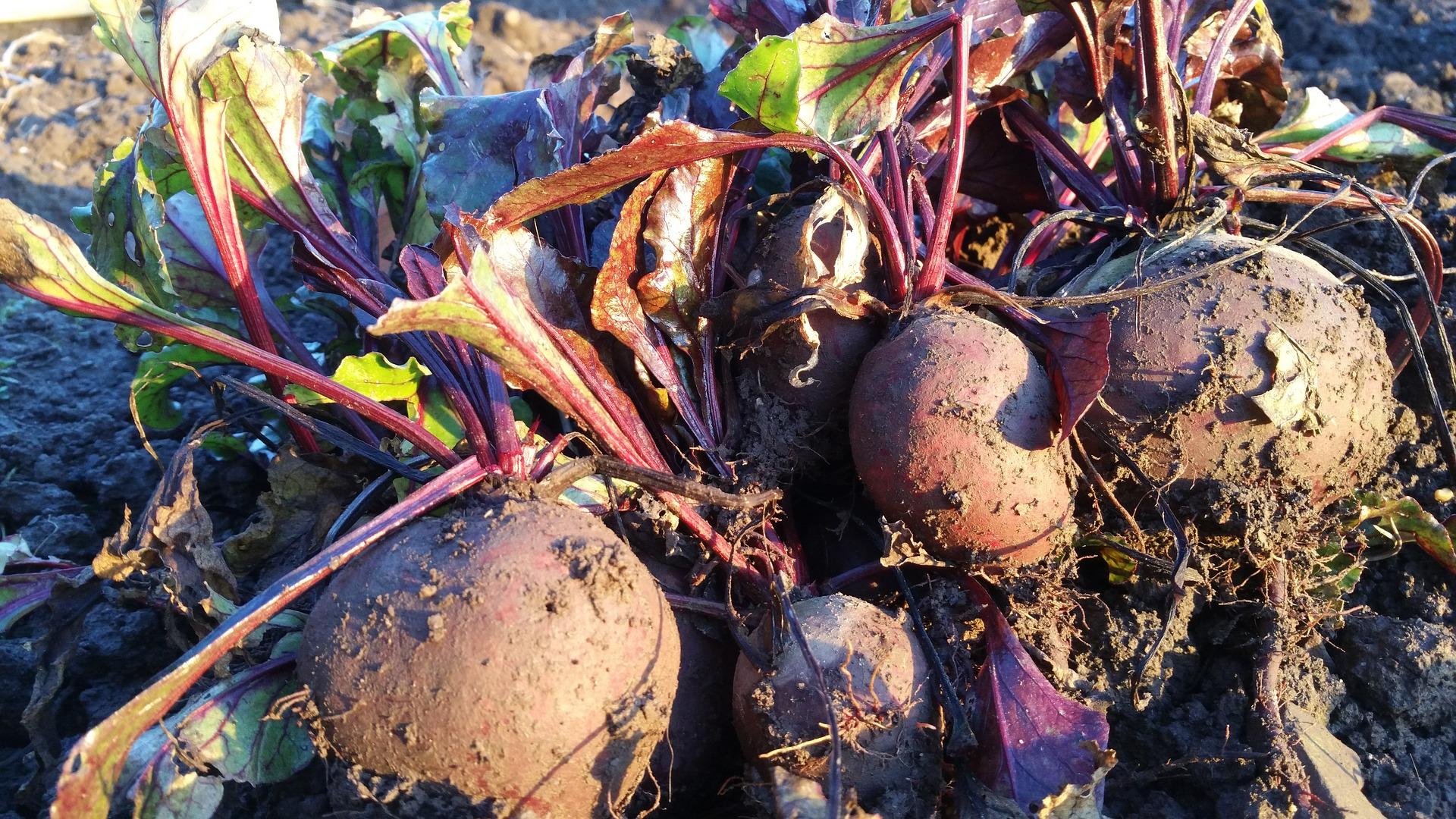About beets
- Hardiness: Semi-hardy (can withstand light frosts, but not heavy frosts or freezing; roots can tolerate colder temperatures than tops). Biennial (plant that requires two growing seasons to complete its life-cycle) but treated as an annual. In the amaranth family.
- Planting: Direct seed into garden in early spring and late summer. Soaking seed in warm water for 24 hours before planting will aid germination which, in turn, may help prevent soil rot and seed maggot problems in cool, spring soil. Fluff soil with a garden fork and smooth with a metal rake before sowing. Tolerates partial shade, grows well with 4-6 hours of direct light/day.
- Days to maturity: Expect germination in 10 to 15 days and harvests within 50 to 60 days from direct seeding.
- Spacing: Plant in wide rows or beds, space seeds 2 inches apart in all directions, and cover with ½ inch of fine soil or 1 inch of sandy soil. Final spacing should be 3 inches in all directions. The final thinning can be delayed until small beets are large enough for table use.
- Fertilizer needs: High requirement for nutrients, either from soil organic matter or fertilizers. Apply a fertilizer before seeding. Boron, a micronutrient, may be deficient in sandy soils and cause the development of black spots in the roots. If soil is deficient, apply 6 to 7 level tablespoons of borax/1000 sq. ft. of garden area. Refer to Fertilizing Vegetables for details.
- Approximate yield (per 10-foot row): 2 to 5 pounds, depending on size at harvest.
Beet problems
Cercospora leaf spot
Deformed beets
Leafminer
Growing and care of beets
- Beets come in a variety of shapes and colors, including red, golden, white, and striped. Cylindrical-shaped beets, such as ‘Cylindra,' yield many uniform slices per root. Smaller beets are usually preferred for canning and pickling.
- Beet seed is actually a fruit or seed ball with several embryos.
- Unless you buy seed designated as monogerm seed — one embryo per fruit — you will need to thin the planting when plants are 2 inches in height.
- Sow beets several weeks before the last spring frost, throughout the summer, and up until 6 weeks before the first killing frost in the fall.
- Seed germination temperature range is 45° to 85°F.
- Thinnings can be used in salads.
- Watering - Keep plants uniformly supplied with moisture for best performance. Water deeply and regularly during dry periods.
- Weeding - Remove all young weed seedlings by hand and use a mulch laid along each side of the row to keep weed seeds from germinating. Frequent shallow cultivation is important because beets compete poorly with weeds, especially when small. Deep cultivation after the weeds are large damages beetroots.
Harvesting
- Pull beetroots when they are 1 to 3 inches in diameter.
Storage and preservation
- Beets store best in a very cold (32 degrees F), moist (95% Relative Humidity) environment. In the refrigerator, store in a vented plastic bag.
